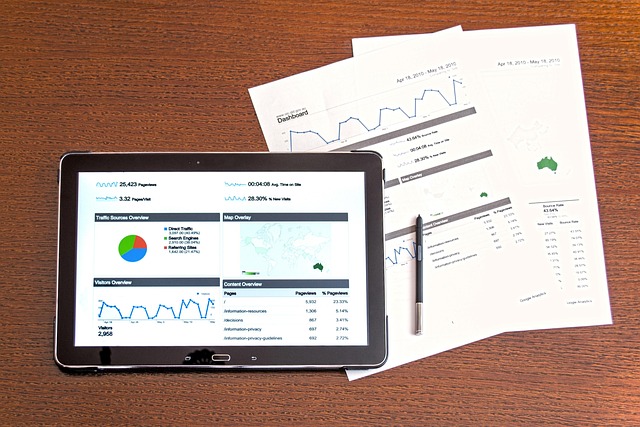
Investing is one of the most powerful tools for building wealth, yet for beginners, it can feel like navigating a maze. As of July 12, 2025, with inflation at 2.5% and the S&P 500 averaging 7–10% annual returns historically, starting to invest is more accessible and essential than ever. Whether you’re saving for retirement, a home, or financial freedom, investing allows your money to grow through the magic of compound interest. Consider Alex, a 25-year-old software developer earning $70,000 annually. By investing $200 monthly in a low-cost index fund, he could amass over $1 million by age 65. Even with just $100 to start, anyone can begin building wealth today.
This comprehensive guide is designed for beginners, breaking down the essentials of investing into clear, actionable steps. We’ll cover understanding the basics, setting investment goals, choosing the right accounts, picking investments, and managing risks. Through real-world examples, detailed calculations, and practical tips, you’ll learn how to take your first steps into the market with confidence. With platforms like Vanguard, Fidelity, and Robinhood offering commission-free trading in 2025, there’s no better time to start. Let’s dive in and launch your investment journey!

Section 1: Understanding the Basics of Investing
Investing means putting your money into assets—stocks, bonds, real estate—that have the potential to grow in value or generate income over time. Unlike saving, which preserves money, investing aims to outpace inflation and build wealth.
Key Concepts
- Compound Interest: Earnings generate more earnings. For example, $1,000 at 7% annual return grows to $1,967 in 10 years, $7,612 in 30 years, via the formula: A = P(1 + r/n)^(nt), where A is the future value, P is principal, r is the rate, n is compounding frequency, and t is years.
- Risk vs. Reward: Higher potential returns (e.g., stocks, 7–10%) come with higher risk; safer assets (e.g., bonds, 3–5%) offer lower returns.
- Diversification: Spreading investments across assets reduces risk. A single stock may crash, but a fund with 500 stocks (e.g., S&P 500) balances losses.
- Time Horizon: Longer timelines favor riskier assets like stocks, as markets recover from dips (e.g., 18% S&P 500 drop in 2022 recovered by 2024).
- Fees: Low fees (e.g., 0.03% for ETFs) preserve returns. A 1% fee on $10,000 over 30 years at 7% costs $2,300 vs. $200 at 0.03%.
Types of Investments
- Stocks: Ownership in companies (e.g., Apple). High growth (7–10%), volatile. Example: $1,000 in Apple stock in 2015 grew to ~$7,000 by 2025.
- Bonds: Loans to governments/companies (e.g., U.S. Treasury bonds, ~4% yield). Stable, lower returns.
- ETFs/Index Funds: Baskets of stocks/bonds (e.g., Vanguard Total Stock Market ETF, VTI). Diversified, low-cost (0.03–0.1% fees), ~7% returns.
- Real Estate: Physical properties or crowdfunding (e.g., Fundrise, 8–12% returns). Less liquid, higher initial costs.
- Mutual Funds: Similar to ETFs but often higher fees (0.5–1%).
Example
Alex invests $1,000 in VTI (0.03% fee, 7% return). In 10 years, it grows to ~$2,000; in 30 years, ~$7,600. Understanding these basics helps him choose investments aligned with his goals.
Why It Matters
Grasping investing fundamentals empowers you to make informed decisions, balancing risk, reward, and time to grow wealth. Alex’s knowledge of compounding drives his $200/month commitment.
Section 2: Setting Investment Goals
Clear goals align your investments with your financial aspirations, guiding account and asset choices.
Step 1: Define Your Objectives
- Short-Term (1–5 Years): Emergency fund, car, vacation. Safer investments (e.g., high-yield savings, 4.5% APY).
- Medium-Term (5–10 Years): Home down payment, wedding. Balanced investments (e.g., 60% stocks, 40% bonds).
- Long-Term (10+ Years): Retirement, financial independence. Growth-focused (e.g., 80–100% stocks).
- Example: Alex’s goals: $5,000 emergency fund (2 years), $20,000 home down payment (7 years), $1 million retirement (age 65, 40 years).
Step 2: Estimate Costs
- Emergency Fund: 3–6 months of expenses. Alex’s $3,000/month expenses need $9,000–$18,000. He targets $10,000.
- Home Down Payment: $20,000 in 2025 dollars. At 2.5% inflation, $20,000 in 2032 ≈ $24,000 (FV = PV × (1 + i)^t).
- Retirement: Using the 4% rule, $50,000/year (2065 dollars) requires $1.25 million. With $30,000/year Social Security, Alex needs $900,000.
- Calculation: $200/month at 7% for 40 years ≈ $1.2 million (compound interest with monthly contributions).
Step 3: Set Milestones
- Year 2: $5,000 emergency fund ($208/month at 4.5%).
- Year 7: $24,000 down payment ($250/month at 6%).
- Year 40: $900,000 retirement ($200/month at 7%).
- Example: Alex prioritizes $208/month for the emergency fund, then shifts to $200/month for retirement and $250/month for the down payment.
Example
Alex’s goals: $10,000 emergency fund by 2027, $24,000 down payment by 2032, $900,000 by 2065. He budgets $200/month for retirement now, adding $208/month for emergencies, planning to redirect funds post-debt.
Why It Matters
Goals give investing purpose, ensuring Alex’s $200/month aligns with his $900,000 retirement target, balancing short- and long-term needs.
Section 3: Choosing Investment Accounts
The right account maximizes tax advantages and accessibility, tailored to your goals.
1. Taxable Brokerage Account
- What It Is: General investment account (e.g., Fidelity, Robinhood, commission-free in 2025).
- Pros: Unlimited contributions, flexible withdrawals, diverse investments.
- Cons: Capital gains taxes (15–20% on profits), no tax breaks.
- Example: Alex invests $1,000 in VTI. Gains are taxed, but flexibility suits his down payment goal.
2. 401(k) or 403(b)
- What It Is: Employer-sponsored, pre-tax contributions reduce taxable income. 2025 limit: $23,500 (under 50).
- Pros: Employer match (e.g., Alex’s 5% match on $70,000 = $3,500/year), tax-deferred growth.
- Cons: Limited investments, penalties before 59½.
- Example: Alex contributes 6% ($350/month), getting $292/month match, totaling $642/month.
3. Roth IRA
- What It Is: After-tax contributions, tax-free withdrawals in retirement. 2025 limit: $7,000 (under 50), income limit $161,000 (single).
- Pros: Tax-free growth, penalty-free contribution withdrawals.
- Cons: Lower limit, income restrictions.
- Example: Alex contributes $3,000/year ($250/month) for tax-free retirement growth.
4. Traditional IRA
- What It Is: Pre-tax contributions, tax-deductible if income below $83,000 (single, 2025). Taxed withdrawals.
- Pros: Tax savings now, good for high earners.
- Cons: Taxed withdrawals, less flexible.
- Example: Alex skips Traditional IRA, favoring Roth’s tax-free benefits.
5. Health Savings Account (HSA)
- What It Is: For high-deductible health plans (HDHP). 2025 limit: $4,300 (individual). Tax-free for medical expenses.
- Pros: Triple tax advantage (deductible contributions, tax-free growth, tax-free medical withdrawals).
- Cons: Requires HDHP, medical-use restriction until 65.
- Example: Alex contributes $1,200/year ($100/month) to an HSA, investing in ETFs.
Alex’s Plan
- Priority: Max 401(k) match ($292/month), Roth IRA ($200/month), HSA ($100/month), taxable account ($208/month for emergency fund).
- Total: $592/month long-term, $208/month short-term. After debt, he increases Roth IRA to $300/month.
Why It Matters
Accounts like 401(k) and Roth IRA leverage tax benefits, growing Alex’s $592/month to $900,000 by 65, while taxable accounts fund shorter-term goals.
Section 4: Picking Investments
Choosing the right investments within accounts balances growth, risk, and fees. Here are beginner-friendly options for 2025:
1. Target-Date Funds
- What They Are: Mutual funds adjusting risk as retirement nears (e.g., Vanguard Target Retirement 2065, VTTSX, 0.08% fee).
- Pros: Automatic diversification, low fees, hands-off.
- Cons: Less control, slightly higher fees than ETFs.
- Example: Alex’s 401(k) invests $642/month in VTTSX. At 7%, $5,000/year grows to ~$600,000 in 40 years.
2. Index Funds/ETFs
- What They Are: Track markets (e.g., Vanguard Total Stock Market ETF, VTI, 0.03% fee; Fidelity Zero Total Market, FZROX, 0% fee). ~7–10% historical returns.
- Pros: Low-cost, diversified, high growth.
- Cons: Market volatility (e.g., 18% S&P 500 drop in 2022).
- Example: Alex’s Roth IRA ($200/month) in VTI grows to ~$480,000 in 40 years at 7%.
3. Bonds/Bond Funds
- What They Are: Safer assets (e.g., iShares Core U.S. Aggregate Bond ETF, AGG, 0.03% fee, ~4% return).
- Pros: Stability, income.
- Cons: Lower returns.
- Example: Alex allocates 10% of his HSA ($12/month) to AGG for balance.
4. Diversified Portfolio
- 80/20 Rule: 80% stocks (VTI), 20% bonds (AGG) for young investors. Adjust to 60/40 by 50.
- Example: Alex’s 401(k) ($642/month) is 80% VTTSX, 20% AGG; Roth IRA is 100% VTI for growth.
Investment Strategy
- Start Simple: Use VTI or target-date funds for diversification.
- Minimize Fees: Choose funds with <0.1% fees (e.g., VTI, FZROX).
- Stay Long-Term: Ignore dips (e.g., 2022 recovery by 2024).
- Example: Alex’s $592/month (401(k), Roth IRA, HSA) at 7% grows to ~$1.1 million by 65, exceeding his $900,000 goal.
Why It Matters
Low-cost, diversified investments like VTI maximize Alex’s returns, turning $592/month into a retirement fortune while minimizing risk.
Section 5: Managing Risks
Investing involves risks, but understanding and mitigating them ensures long-term success.
1. Market Risk
- What It Is: Price fluctuations (e.g., S&P 500 dropped 18% in 2022).
- Mitigation: Diversify with ETFs (VTI covers 4,000 stocks), hold for 10+ years (markets recover historically).
- Example: Alex’s $5,000 in VTI drops to $4,000 in a crash but recovers to $6,000 in 2 years.
2. Inflation Risk
- What It Is: 2.5% inflation in 2025 erodes purchasing power. $10,000 today is worth ~$6,100 in 20 years.
- Mitigation: Invest in stocks (7–10% returns) to outpace inflation. Alex’s VTI investment grows faster than 2.5%.
- Example: $200/month at 7% grows to $480,000 in 40 years, maintaining value against inflation.
3. Emotional Risk
- What It Is: Panic-selling during dips locks in losses.
- Mitigation: Automate investments, focus on long-term goals, ignore news cycles.
- Example: Alex stays invested during a 2025 dip, avoiding a $1,000 loss by holding VTI.
4. Fee Risk
- What It Is: High fees (1% vs. 0.03%) erode returns. On $10,000 at 7% for 30 years, 1% fees cost $2,300.
- Mitigation: Choose low-cost ETFs (VTI, 0.03%) or index funds (FZROX, 0%).
- Example: Alex’s VTI investment saves $2,100 over 30 years vs. a 1% fund.
Alex’s Risk Management
- Diversification: 80% VTI, 20% AGG in 401(k); 100% VTI in Roth IRA.
- Long-Term Focus: Ignores 2025 volatility, holding for 40 years.
- Low Fees: Uses VTI (0.03%), saving thousands long-term.
- Automation: $592/month auto-investments prevent emotional decisions.
Why It Matters
Managing risks ensures Alex’s investments grow steadily, turning $592/month into $1.1 million without derailing from market swings or fees.
Conclusion
Investing in 2025 is a beginner-friendly path to wealth, with platforms like Fidelity and Vanguard making it easy to start. Alex’s journey—investing $592/month to reach $1.1 million by 65—shows how understanding basics, setting goals ($900,000 retirement), choosing accounts (401(k), Roth IRA), picking low-cost ETFs (VTI), and managing risks builds a secure future. With inflation at 2.5% and markets averaging 7%, starting with $50/month in a Roth IRA or $100 in a taxable account can grow significantly. The key is action: open an account, invest in VTI, automate contributions, and stay disciplined.
Don’t let fear of the market stop you. Like Alex, start this weekend—July 12, 2025—by opening a Fidelity account or depositing $100 in VTI. Every dollar invested today is a step toward financial freedom. Begin your investing journey now!















Leave a Reply